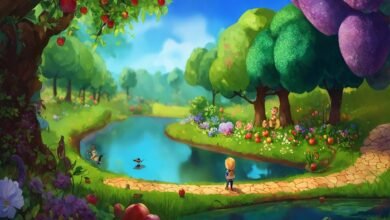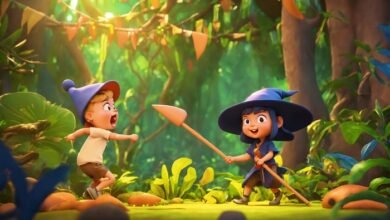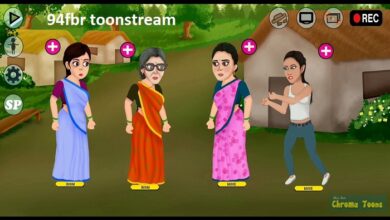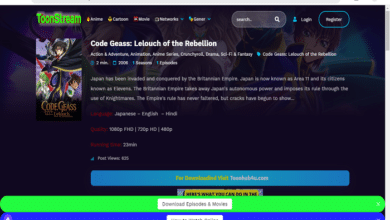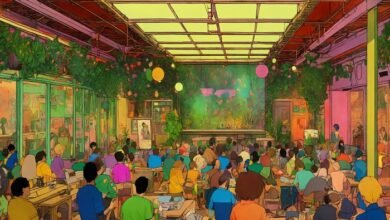Toon Cartoon: A Journey Through Animated Wonders

Introduction
Toon cartoons have been a cherished part of popular culture for decades, captivating audiences with their whimsical stories, colorful characters, and imaginative worlds. This blog post delves into the fascinating world of toon cartoons, exploring their history, evolution, and impact on society. Whether you are a long-time fan or new to the genre, join us on this journey through the animated wonders of toon cartoons.
The Birth of Toon Cartoons
The origins of toon cartoons can be traced back to the early 20th century when animation pioneers began experimenting with motion pictures. These early toon cartoons were often short, black-and-white films featuring simple, hand-drawn characters. One of the first notable toon cartoons was “Gertie the Dinosaur” by Winsor McCay, released in 1914. This groundbreaking film showcased the potential of animation and set the stage for the future of toon cartoons.
The Golden Age of Toon Cartoons
The Golden Age of toon cartoons, spanning from the 1930s to the 1950s, marked a period of immense creativity and innovation in the animation industry. Iconic studios like Walt Disney, Warner Bros., and MGM produced some of the most beloved toon cartoons during this era. Classics such as “Mickey Mouse,” “Looney Tunes,” and “Tom and Jerry” emerged, introducing audiences to memorable characters and timeless humor that continue to resonate today.
The Evolution of Animation Techniques
As technology advanced, so did the techniques used in creating toon cartoons. The transition from hand-drawn animation to computer-generated imagery (CGI) revolutionized the industry. This shift allowed for greater detail, fluidity, and realism in toon cartoons. Notable examples include Pixar’s “Toy Story,” which was the first fully CGI toon cartoon feature film, and DreamWorks’ “Shrek,” which further pushed the boundaries of what toon cartoons could achieve.
Cultural Impact of Toon Cartoons
Toon cartoons have left an indelible mark on popular culture, influencing generations of viewers and creators alike. From catchphrases and iconic moments to merchandise and theme parks, the impact of toon cartoons extends far beyond the screen. Characters like Bugs Bunny, Mickey Mouse, and SpongeBob SquarePants have become cultural icons, representing the joy and creativity that toon cartoons bring to the world.
The Artistry Behind Toon Cartoons
Creating a toon cartoon is a complex and collaborative process that involves numerous artists, writers, and animators. Each frame is meticulously crafted to ensure that characters and scenes come to life with vibrant energy. The artistry behind toon cartoons is evident in the attention to detail, expressive animation, and innovative storytelling techniques that captivate audiences and make toon cartoons a unique art form.
Toon Cartoons in Television
Television has been a significant platform for toon cartoons, offering a wide range of shows that cater to diverse audiences. From Saturday morning cartoons to prime-time animated series, toon cartoons have become a staple of television programming. Shows like “The Simpsons,” “Family Guy,” and “Adventure Time” have pushed the boundaries of what toon cartoons can explore, addressing complex themes while maintaining their appeal to both children and adults.
Toon Cartoons in Film
Toon cartoons have also made a significant impact on the film industry, with animated feature films achieving critical and commercial success. Studios like Disney, Pixar, and Studio Ghibli have produced masterpieces that have become classics in their own right. Films such as “The Lion King,” “Finding Nemo,” and “Spirited Away” showcase the emotional depth, visual splendor, and storytelling prowess that toon cartoons can achieve on the big screen.
The Future of Toon Cartoons
The future of toon cartoons looks promising, with advancements in technology and storytelling continuing to push the boundaries of the medium. Virtual reality (VR) and augmented reality (AR) are opening new possibilities for interactive and immersive toon cartoon experiences. Additionally, the rise of streaming platforms has provided a global stage for diverse and innovative toon cartoons, ensuring that the genre remains vibrant and relevant for future generations.
Toon Cartoons Around the World
Toon cartoons are a global phenomenon, with different cultures contributing their unique styles and stories to the genre. Japanese anime, French animated films, and British cartoons each offer distinct perspectives and artistic approaches. This international diversity enriches the world of toon cartoons, providing audiences with a wide array of narratives and visual styles to enjoy.
The Timeless Appeal of Toon Cartoons
What makes toon cartoons timeless is their ability to evoke emotions, spark imagination, and create lasting memories. Whether it’s the nostalgia of classic cartoons or the excitement of discovering new favorites, toon cartoons hold a special place in our hearts. Their universal themes, endearing characters, and imaginative worlds ensure that toon cartoons will continue to be cherished by audiences of all ages for generations to come.
Conclusion
Toon cartoons have evolved from simple hand-drawn animations to complex and sophisticated art forms that entertain and inspire millions around the world. Their rich history, cultural impact, and artistic brilliance make toon cartoons a beloved genre that transcends age and time. As we look to the future, the world of toon cartoons promises to continue enchanting audiences with its endless creativity and boundless imagination.
FAQs
1. What was the first toon cartoon ever made?
The first notable toon cartoon is often considered to be “Gertie the Dinosaur” by Winsor McCay, released in 1914. This early animated film showcased the potential of toon cartoons and paved the way for future developments in the genre.
2. How did CGI change the landscape of toon cartoons?
CGI revolutionized toon cartoons by allowing for greater detail, fluidity, and realism. It enabled the creation of fully computer-generated feature films like “Toy Story” and expanded the possibilities for visual storytelling and animation techniques.
3. What are some iconic toon cartoon characters?
Iconic toon cartoon characters include Mickey Mouse, Bugs Bunny, SpongeBob SquarePants, and many others. These characters have become cultural icons, known for their distinctive personalities and widespread appeal.
4. How have toon cartoons influenced popular culture?
Toon cartoons have significantly influenced popular culture through catchphrases, merchandise, theme parks, and more. Characters and shows from toon cartoons often become deeply ingrained in societal references and entertainment traditions.
5. What is the future of toon cartoons?
The future of toon cartoons looks promising with advancements in technology such as VR and AR, as well as the global reach provided by streaming platforms. These developments will continue to expand the creative possibilities and accessibility of toon cartoons, ensuring their continued relevance and popularity.

